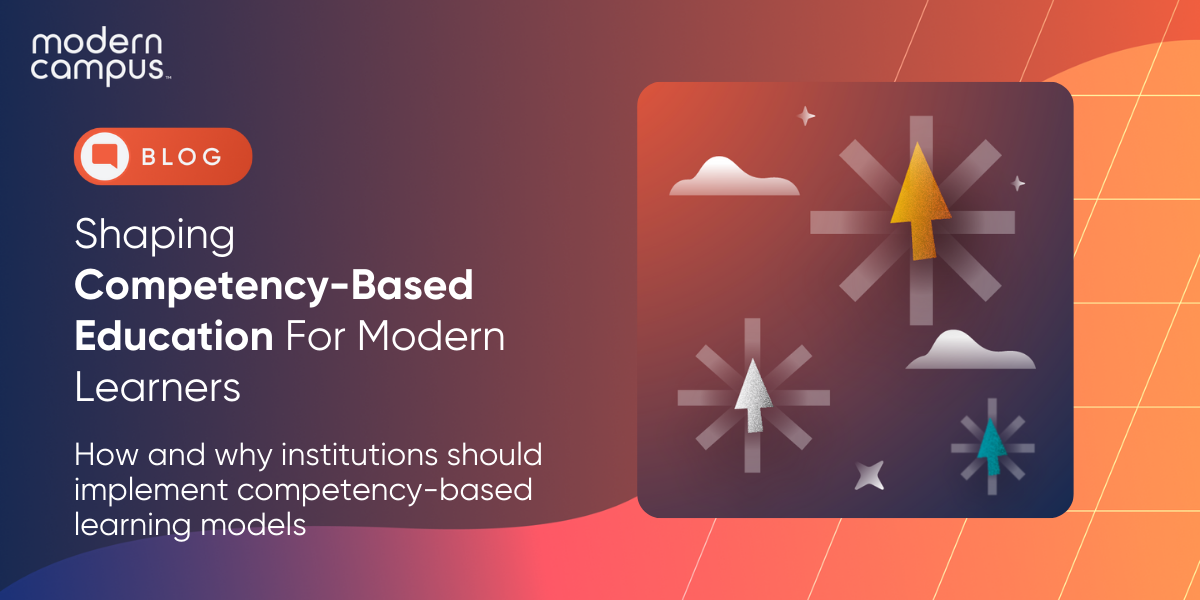Shaping Competency-Based Education for Modern Learners
Traditional education models are being challenged to meet the diverse needs of learners in the 21st century. One approach that has gained significant attention is competency-based education (CBE). Competency-based education emphasizes the development and mastery of specific skills and knowledge rather than relying solely on time-based requirements.
What is Competency-Based Education?
Competency-based education is an instructional approach that focuses on the acquisition and demonstration of specific competencies or skills. It shifts the emphasis from seat time and credits to a student-centered approach that values mastery and performance. Key components of competency-based education include:
- Emphasizes personalized learning pathways with clear learning outcomes.
- Employs authentic assessments to evaluate students' skills and knowledge.
- Flexible progression, enabling students to advance at their own pace.
- Continuous assessment ensures ongoing feedback and improvement.
- Mastery of skills and competencies is the focus, rather than seat time or grades.
- Promotes real-world relevance by connecting learning to practical applications, preparing students for the demands of the workforce.
These key components combine to create a student-centered approach that enhances engagement, individualized growth and the development of relevant skills for success.
Competency-Based Education vs. Outcome-Based Education
While competency-based education and outcome-based education share similarities, they are distinct in their focus. Outcome-based education primarily concentrates on achieving desired learning outcomes, while competency-based education places greater emphasis on skill development and mastery. Competency-based education goes beyond the acquisition of knowledge to ensure learners can apply their skills effectively in real-world contexts.
Types of Competency-Based Education
Competency-based education can be implemented in various ways depending on the educational context. Some common types of CBE strategies include:
Project-based learning: Involves students using their knowledge in real-world projects, either individually or in groups, which are specifically customized to match their interests and capabilities.
Problem-based learning: Requires students to collaborate in order to solve problems that are derived from real-world situations. This approach facilitates the development of critical thinking and problem-solving skills.
Inquiry-based learning: Empowers students to explore topics or concepts that captivate their interest. They have the freedom to ask questions and investigate in their own unique manner.
Collaborative learning: Fosters an environment where students are motivated and empowered to work together towards the completion of a task or project. This process enhances communication and teamwork skills among students.
Self-directed learning: Grants students the autonomy to govern their own educational journey. They have the freedom to choose what they want to learn, as well as how, when and where they want to acquire knowledge.
Advantages of Competency-Based Education
Personalized Learning
Competency-based education enables personalized learning experiences tailored to individual student needs, interests and learning styles.
Improved Skill Mastery
By focusing on mastery of competencies, students develop a deeper understanding of the subject matter and acquire skills that can be applied effectively.
Career Relevance
Competency-based education aligns educational experiences with real-world skills and workforce demands, increasing graduates' employability.
Technology Integration
Competency-based education leverages technology tools and platforms to facilitate personalized learning, provide timely feedback and track student progress.
Workplace Applications
Competency-based education prepares students with the skills and knowledge necessary for success in the rapidly changing professional landscape, fostering a seamless transition from education to the workplace.
How to Implement Competency-Based Education
Implementing competency-based education requires careful planning and consideration. Key steps include:
Designing Curriculum and Instruction
Develop clear competency frameworks aligned with desired learning outcomes. Design learning experiences that allow students to actively engage with the competencies through project-based learning, simulations and real-world applications.
Integrating Technology
Leverage technology tools and platforms to support personalized learning, provide adaptive resources and enable ongoing assessment and feedback.
Train and Support Educators
Provide professional development opportunities for educators to familiarize them with the principles and practices of competency-based education. Equip them with the necessary skills and strategies to facilitate personalized learning and competency-based assessments.
Address Challenges and Barriers
Anticipate and address potential challenges, such as resistance to change, ensuring equitable access to technology and establishing systems for tracking and documenting student progress.
Examples of Institutions with Competency-Based Education:
Several institutions have embraced competency-based education successfully. Western Governors University (WGU), for example, has pioneered a competency-based learning model in higher education, allowing students to progress at their own pace and demonstrate mastery through rigorous assessment.
Southern New Hampshire University (SNHU) has also implemented competency-based education in their online programs, providing flexible and personalized learning experiences.
Competency-based education holds immense promise in transforming traditional education models to meet the needs of today's learners. By prioritizing the development and mastery of specific competencies, this approach fosters personalized learning, improved skill acquisition and career relevance.
Conclusion
Implementing competency-based education requires a thoughtful and strategic approach, integrating technology, supporting educators and addressing potential challenges. As more institutions embrace this innovative approach, the educational landscape will evolve to create a learner-centered ecosystem that prepares students for success in the 21st-century workforce.
Last updated: May 6, 2024




